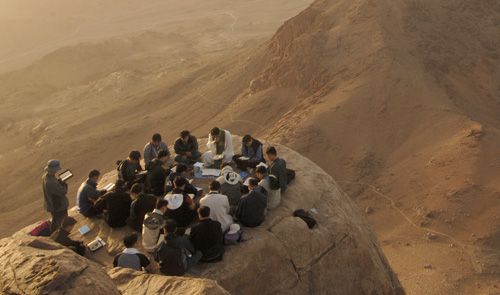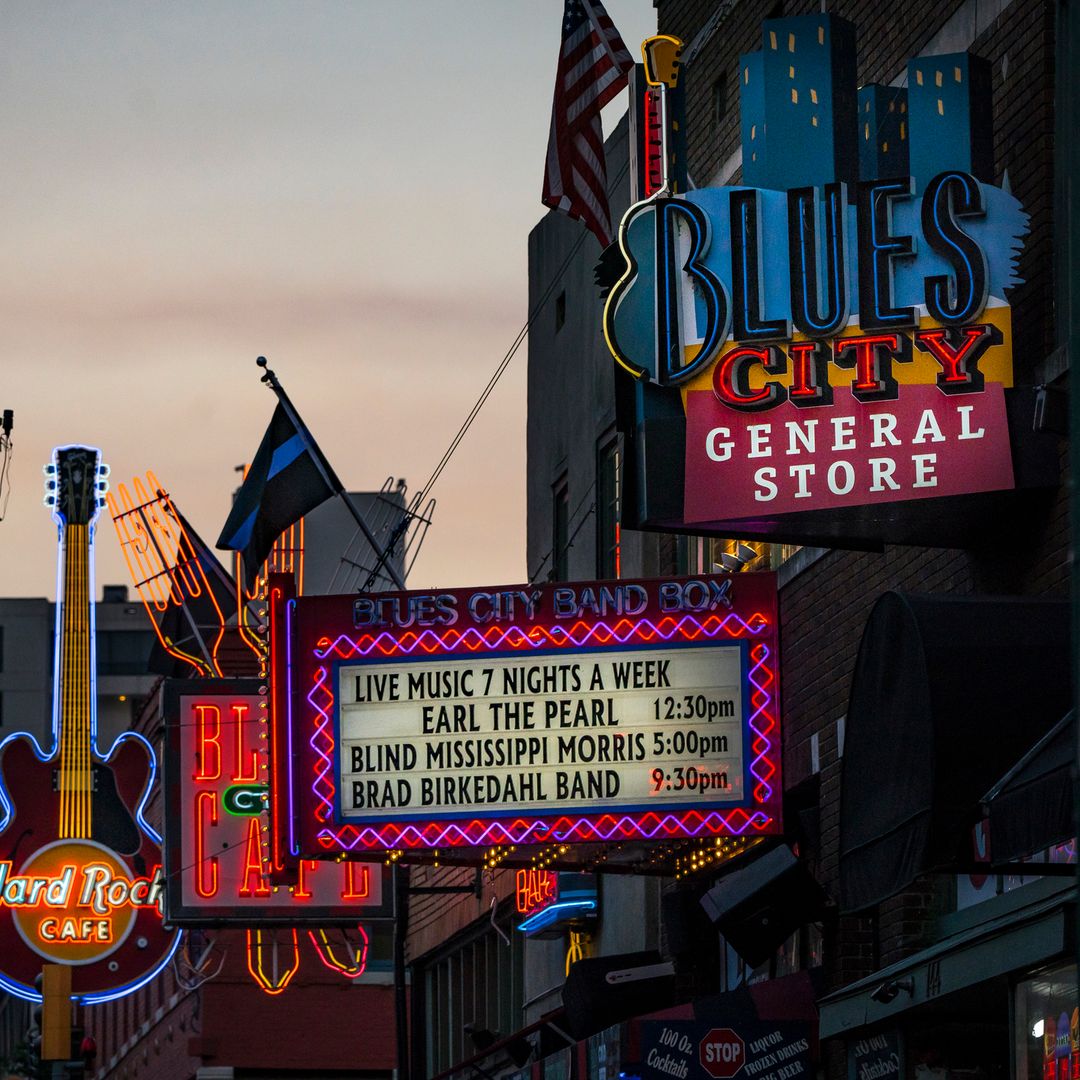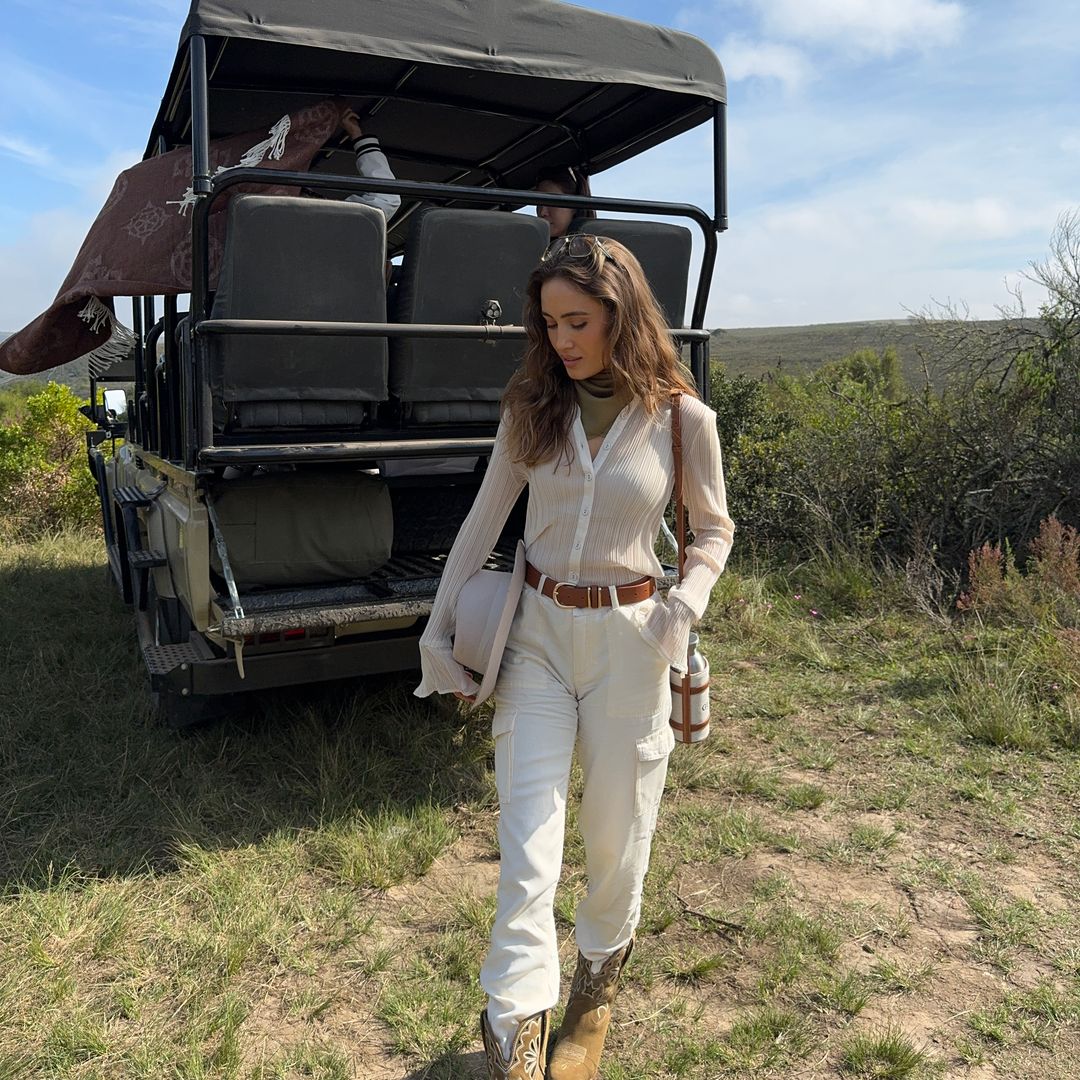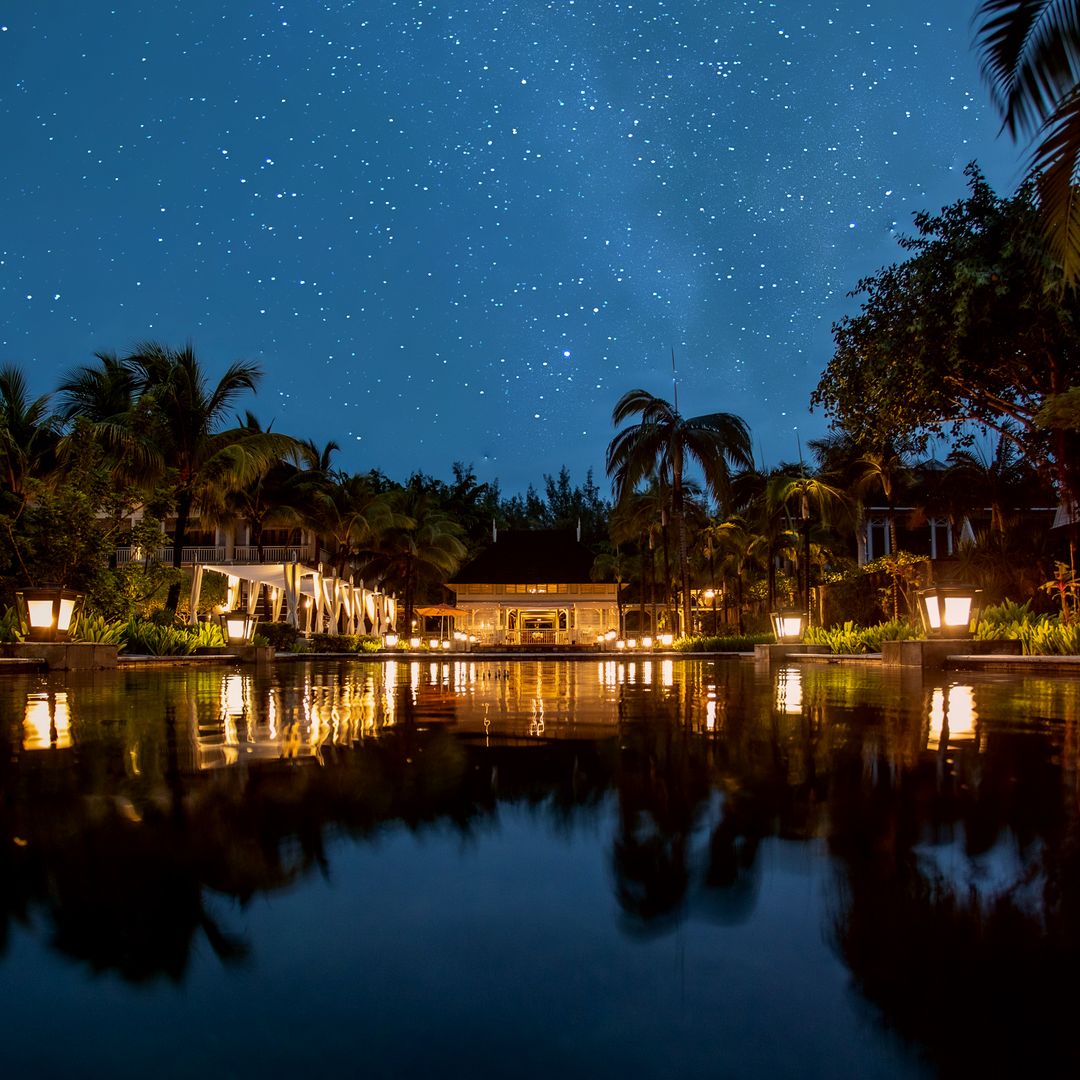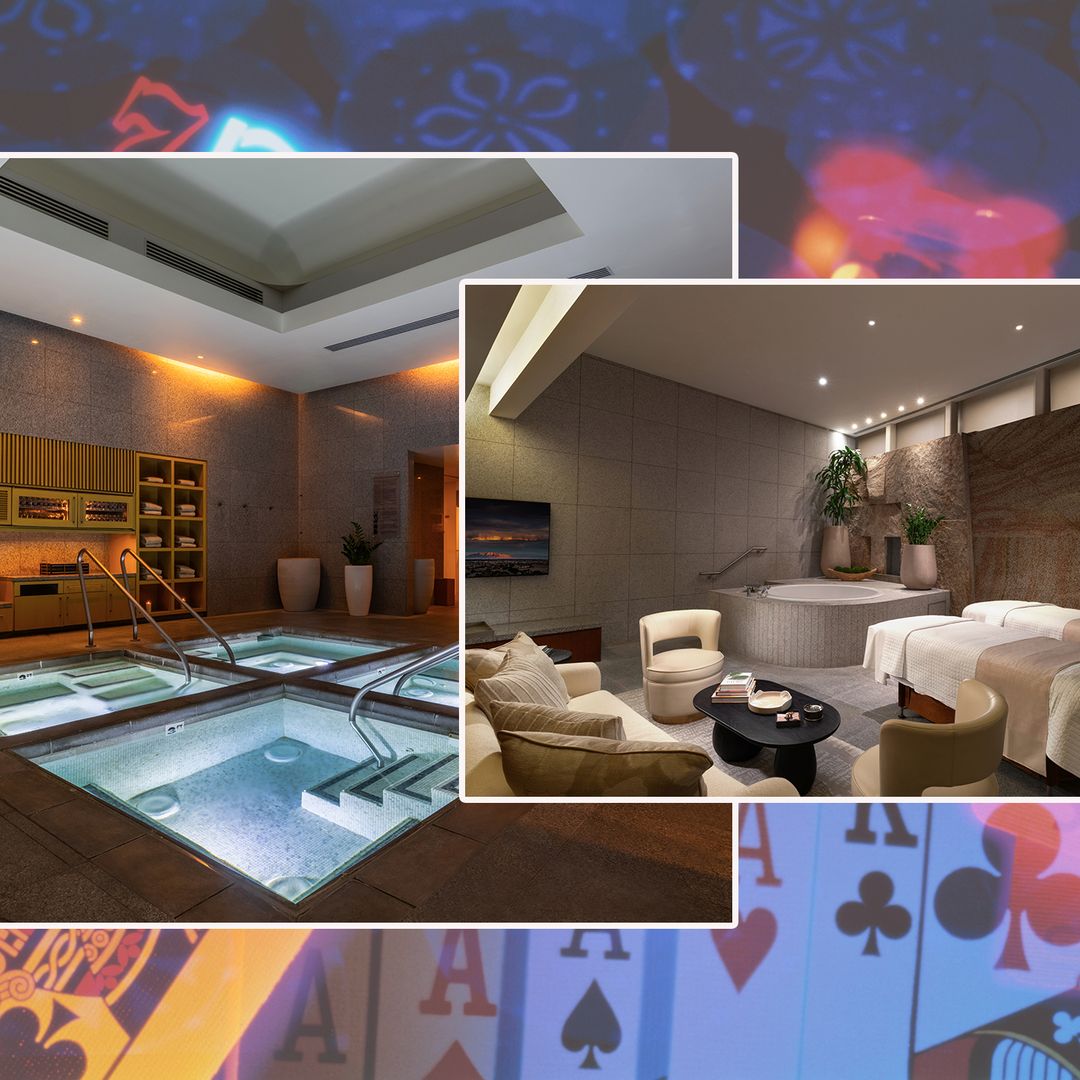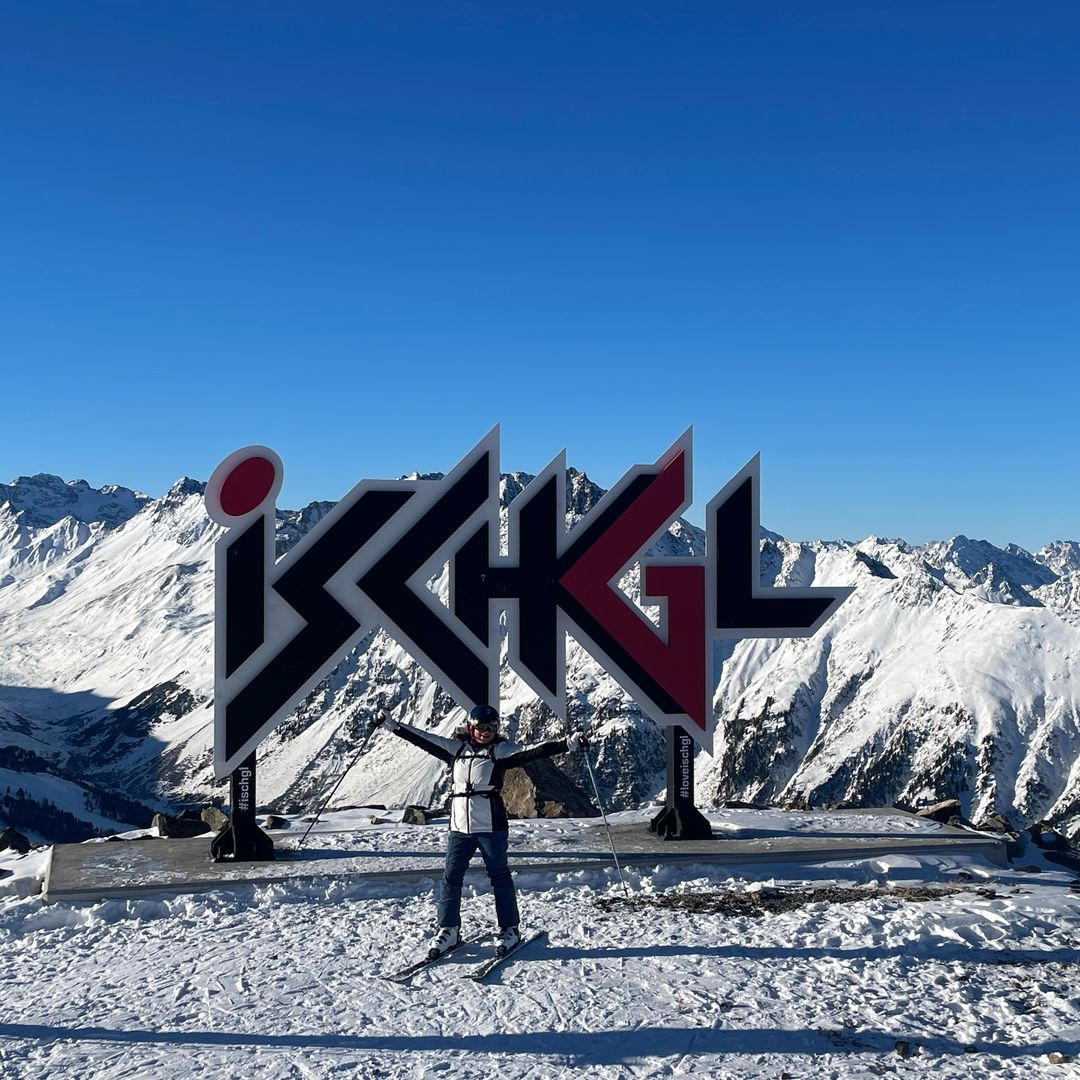It was Emperor Justinian I who, in the year 537, commanded a fortified monastery be built here to protect the entrance to Mount Sinai from foreign invaders. In the fourteenth century, a community of four hundred monks lived within the walls, but today only around 25 Greek Orthodox remain, dedicated to continue the tradition of worship and attending to the numerous tourists who come each day by bus from the Red Sea coast.
A paved road crosses the Sinai Peninsula, a beautiful desert of bare rocky mountains, the land link between the continents of Africa and Asia. At first glance, it appears inhospitable and uninhabited, but a closer look reveals a different truth. Conquered and re-conquered time and again, considered a holy site by many believers, the Biblical desert of stone and sand is today a land of contrasts, where ancient religious history and mass tourism mix with Bedouin tradition and the latest in Western cars.
The monastery enclosure is entered through a small stone portal; emerging, it feels as if you have passed through into a different time. The weight of centuries is palpable in every wall, in every Byzantine doorway, in every Russian icon. (The Russian Orthodox Church has played an important role at Saint Catherine's, and for many years they have sent monks and contributed money to the preservation of the monument.) There are sixth-century mosaics, original wood panelling from the very first temple, inlaid marble floors and an astounding collection of sacred art.
The church of Saint Catherine is the main part of the monastery, open to visitors. It houses valuable mosaics as well as paintings of saints and biblical scenes. To one side of the temple is the Chapel of the Burning Bush, commemorating the place where God is said to have spoken to Moses from the heart of a burning bush.
A flight of steps carved out of the rock starts near the monastery, making the climb to the summit of Jebel Musa easier. Known as Mount Sinai, it is not the highest mountain in the wilderness but it is certainly the most famous. This is where God gave Moses the Tablets of the Law with the Ten Commandments. At sunrise each morning, dozens of Christian groups and members of religious communities of all kinds are drawn to the summit to sing, chant and worship.
Near the monastery is Sharm el Sheikh, the most famous spa resort on the Egyptian Red Sea coast. Located at the southern tip of the peninsula, alongside the Ras Mohammed National Park and surrounded by a great wilderness, here, on a bay of clear water, the Egyptians have created the perfect oasis and holiday resort. Although it has no architectural or historical significance, Sharm el Seikh has become famous for mile after mile of beaches, for its year round warm climate, its competitive prices and, above all, for the seabed, where visitors can explore the magical world of coral reefs with no more than a pair of goggles and a snorkel, or opt for a full scuba diving experience.
Practical guide: Visits to the monastery If your trip doesn't come as part of a package, you could choose to rent a car in Sharm el Sheikh (most of the main car hire companies have offices here) or join one of daily excursions organised by agencies in the city.
Where to sleep There are a number of five-star hotels in and around Sharm el Sheikh, including the Melia Sinai at Ras Nasrani, with its private beach, diving centre and 197 bungalow rooms, and the Jaz Mirabel Beach, another large hotel complex on the beach of Nabq Bay, whose structure mimics traditional Arabic architecture and encompasses 645 rooms.
Don't miss:
- Diving - snorkel or scuba - off the beautiful coral reefs in the Straits of Tiran or Ras Mohammed National Park.
- An evening stroll through the Old Bazaar, the traditional market of Sharm el Sheikh.
- A trip through the heart of the Sinai desert to discover the thousands of shapes and colours of bare rock.
- Climbing Mount Sinai to view a truly biblical sunrise or sunset.

